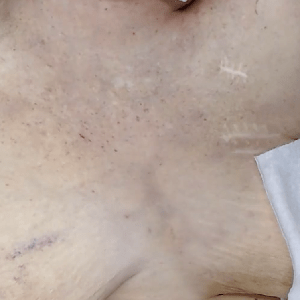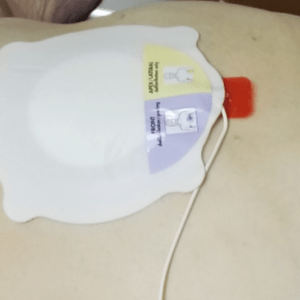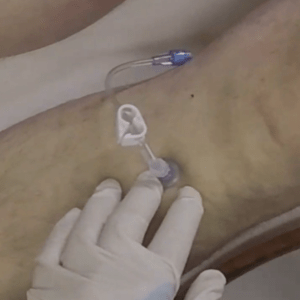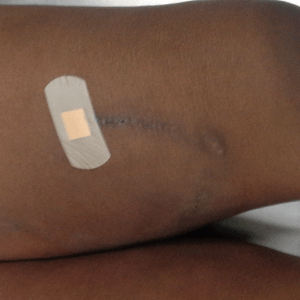Case Selector
Interactive feature available on larger devices.
Cases are divided by Complexity and Independence.
Complexity describes how diagnostically or conceptually difficult the case is itself.
Independence describes how much the student has to “figure out” the case on his or her own (vs. having the site explain it.)
Complexity
Low Complexity:
Cases with simpler anatomy and a straightforward cause of death.
High Complexity:
Cases tending towards diagnostic uncertainty and requiring integration of complex clinical histories.
Independence
Low Independence
Cases with a high amount of explanatory audio; and guiding discussion questions to assist with thinking and assessment.
High Independence
Cases may have little or no explanatory audio; and few or no discussion questions. The viewer functions more independently, as though meeting a “real-world” case.
Statements like “No Explanatory Audio” or “No Discussion Questions” let you know the case requires more independent assessment.
Case Selector
🛈
Low
Independence
Extensive audio explanations and guiding questions. The site mostly explains the case.
↓
🛈
High
Independence
Little or no audio explanation or discussion questions. You’re on your own to figure out the case from the history, video and your skills.
🛈
Low
Complexity
One main, straightforward diagnosis.
Case 4
 Mesothelioma.
Mesothelioma.
Case 17 Severe coronary artery disease.
Severe coronary artery disease.
Case 19 Brain anatomy with a meningioma.
Brain anatomy with a meningioma.
Case 25 Hypertensive aortic rupture while driving a motorcycle.
Hypertensive aortic rupture while driving a motorcycle.
Case 29 Deep venous thrombosis and pulmonary embolism.
Deep venous thrombosis and pulmonary embolism.
Case 35 High speed motor vehicle accident with severed spine, aorta and inferior vena cava.
High speed motor vehicle accident with severed spine, aorta and inferior vena cava.
Case 36 Fall with intraabdominal bleeding.
Fall with intraabdominal bleeding.
Case 41 Uremic pericarditis with weight gain and anasarca.
Uremic pericarditis with weight gain and anasarca.
Case 11 Pulmonary embolism and acute gastritis.
Pulmonary embolism and acute gastritis.
Limited Discussion Questions
Case 12 Pulmonary embolism.
Pulmonary embolism.
No Discussion Questions
Case 14 Hypertensive heart disease.
Hypertensive heart disease.
Limited Discussion Questions
Case 33 Hypertensive aortic rupture with tamponade.
Hypertensive aortic rupture with tamponade.
Minimal to No Audio Discussion
Case 43 Head injury with scalp contusion and intracranial bleed.
Head injury with scalp contusion and intracranial bleed.
No Audio Discussion
No Discussion Questions
Case 46 Perforated pacemaker lead with severe pericarditis, pleuritis and empyema.
Perforated pacemaker lead with severe pericarditis, pleuritis and empyema.
No Audio Discussion
No Discussion Questions
Medium
Complexity
Case 1
 No pathology except for pulmonary edema on microscopy.
No pathology except for pulmonary edema on microscopy.
Case 2 Aspiration in diabetic patient with glottic stenosis.
Aspiration in diabetic patient with glottic stenosis.
Case 3 Sudden death in a heavy smoker with diffuse disease in the LAD; healed clot on top of plaque in the RCA; and a left dominant circulation.
Sudden death in a heavy smoker with diffuse disease in the LAD; healed clot on top of plaque in the RCA; and a left dominant circulation.
Case 40 Massive bleeding after needle biopsy in patient with multiple cancers and multiple surgical procedures.
Massive bleeding after needle biopsy in patient with multiple cancers and multiple surgical procedures.
Case 42 Acute and subacute pulmonary embolism
Acute and subacute pulmonary embolism
Case 10 Peritonitis and colonic hemorrhage following colonoscopy with polypectomy.
Peritonitis and colonic hemorrhage following colonoscopy with polypectomy.
No Discussion Questions
Case 13 Multiple conditions and pathology plus pulmonary edema. Likely cardiac etiology to cause of death.
Multiple conditions and pathology plus pulmonary edema. Likely cardiac etiology to cause of death.
Partial Audio Discussion
Case 23 Pulmonary embolism after Roux-en-Y procedure.
Pulmonary embolism after Roux-en-Y procedure.
Partial Audio Discussion
Case 34 Cardiac catheterization with massive bleeding from the catheter insertion site.
Cardiac catheterization with massive bleeding from the catheter insertion site.
Partial Audio Discussion
Case 44 Postrenal (obstructive) acute renal failure from BPH (benign prostatic hypertrophy) leading to hypertension, aortic dissection and hemoperitoneum.
Postrenal (obstructive) acute renal failure from BPH (benign prostatic hypertrophy) leading to hypertension, aortic dissection and hemoperitoneum.
No Audio Discussion
No Discussion Questions
🛈
High
Complexity
Complex histories, multiple procedures, medical uncertainty, medical errors, and so on. These cases require integration of complex data and advanced clinical judgment.
Case 8
 Hepatic infarct following intraoperative hypotension during TIPS procedure.
Hepatic infarct following intraoperative hypotension during TIPS procedure.
Case 27 Post-dialysis hypotension and delayed care in a patient with chronic pulmonary embolism.
Post-dialysis hypotension and delayed care in a patient with chronic pulmonary embolism.
Case 28 Heart attack following pain-induced tachycardia in a patient with a missed diagnosis of compartment syndrome and multiple vascular surgeries.
Heart attack following pain-induced tachycardia in a patient with a missed diagnosis of compartment syndrome and multiple vascular surgeries.
Case 38 Patient with Crohn’s disease with missed diagnosis of lung mass and unnecessary lung surgical procedure followed by bowel rupture and peritonitis.
Patient with Crohn’s disease with missed diagnosis of lung mass and unnecessary lung surgical procedure followed by bowel rupture and peritonitis.
Case 39 Witnessed collapse with reported bradycardia, followed by CPR and hemoperitoneum originating near the spleen.
Witnessed collapse with reported bradycardia, followed by CPR and hemoperitoneum originating near the spleen.
Case 37 History of metallic taste likely misdiagnosed as “corroded pacemaker” in patient with subsequent renal failure.
History of metallic taste likely misdiagnosed as “corroded pacemaker” in patient with subsequent renal failure.
Partial Audio Discussion
How to use the Case Selector
Scroll through options above.
Cases are divided by Complexity and Independence.
Complexity describes how diagnostically or conceptually difficult the case is itself.
Independence describes how much the student has to “figure out” the case on his or her own (vs. having the site explain it.)
Cases towards the bottom of each list are “High Independence.” Statements like “No Explanatory Audio” or “No Discussion Questions” let you know the case requires more independent assessment.
Complexity
Low Complexity:
Cases with simpler anatomy and a straightforward cause of death.
High Complexity:
Cases tending towards diagnostic uncertainty and requiring integration of complex clinical histories.
Independence
Low Independence
Cases with a high amount of explanatory audio; and guiding discussion questions to assist with thinking and assessment.
High Independence
Cases may have little or no explanatory audio; and few or no discussion questions. Viewer functions more independently, as though meeting a “real-world” case.
…More Details
Case summaries on this page are highly simplified. The complete histories and more educator content is found in the History.
Note from the Director: This page is as close as the site will get to providing concise “cause of death” statements. The goal of the site is not to function as an “expert with answers,” but to let the body teach, guide with questions and engage in the clinical-investigative process.
Instructions:
Click case number or image to
view case.
↓
Case 12 Pulmonary embolism.
Pulmonary embolism.
↑
Click text below to
view History.

 Library
Library History
History Panels
Panels
 How to use this feature (click here)
How to use this feature (click here)